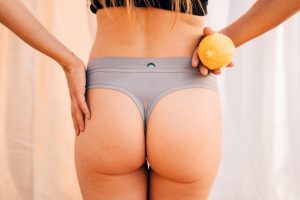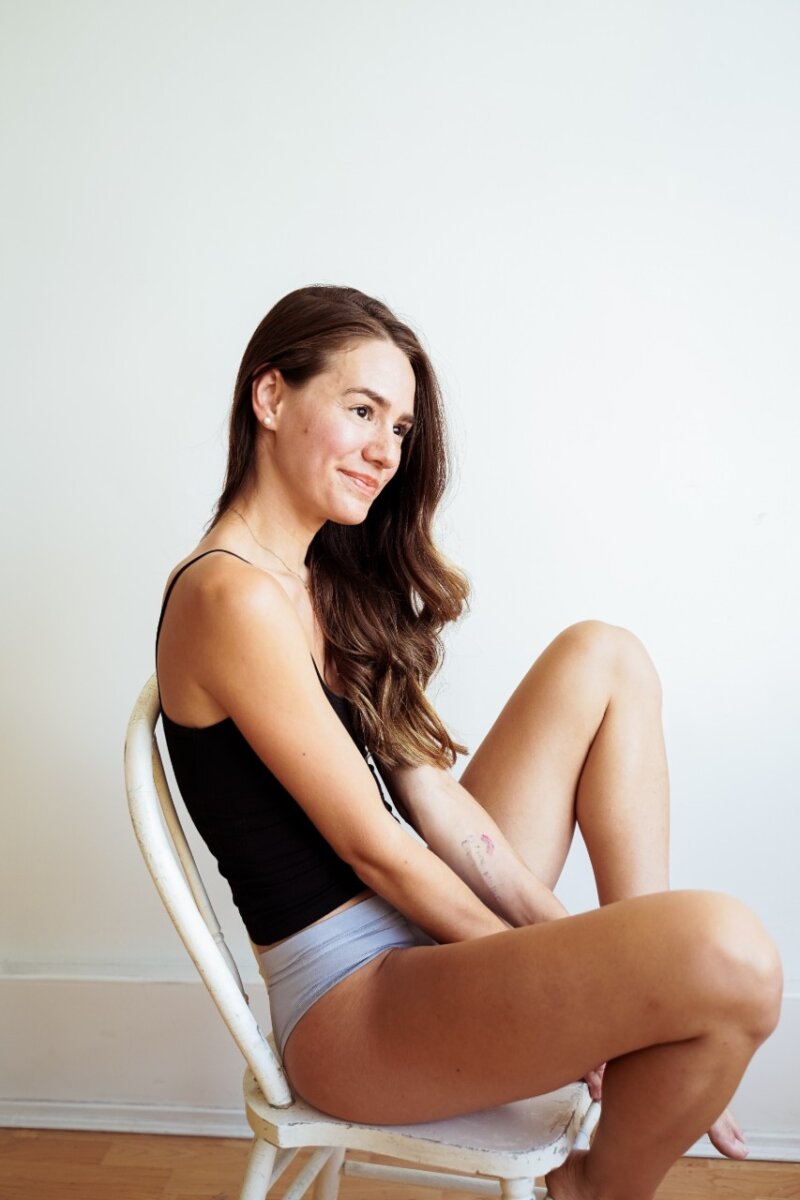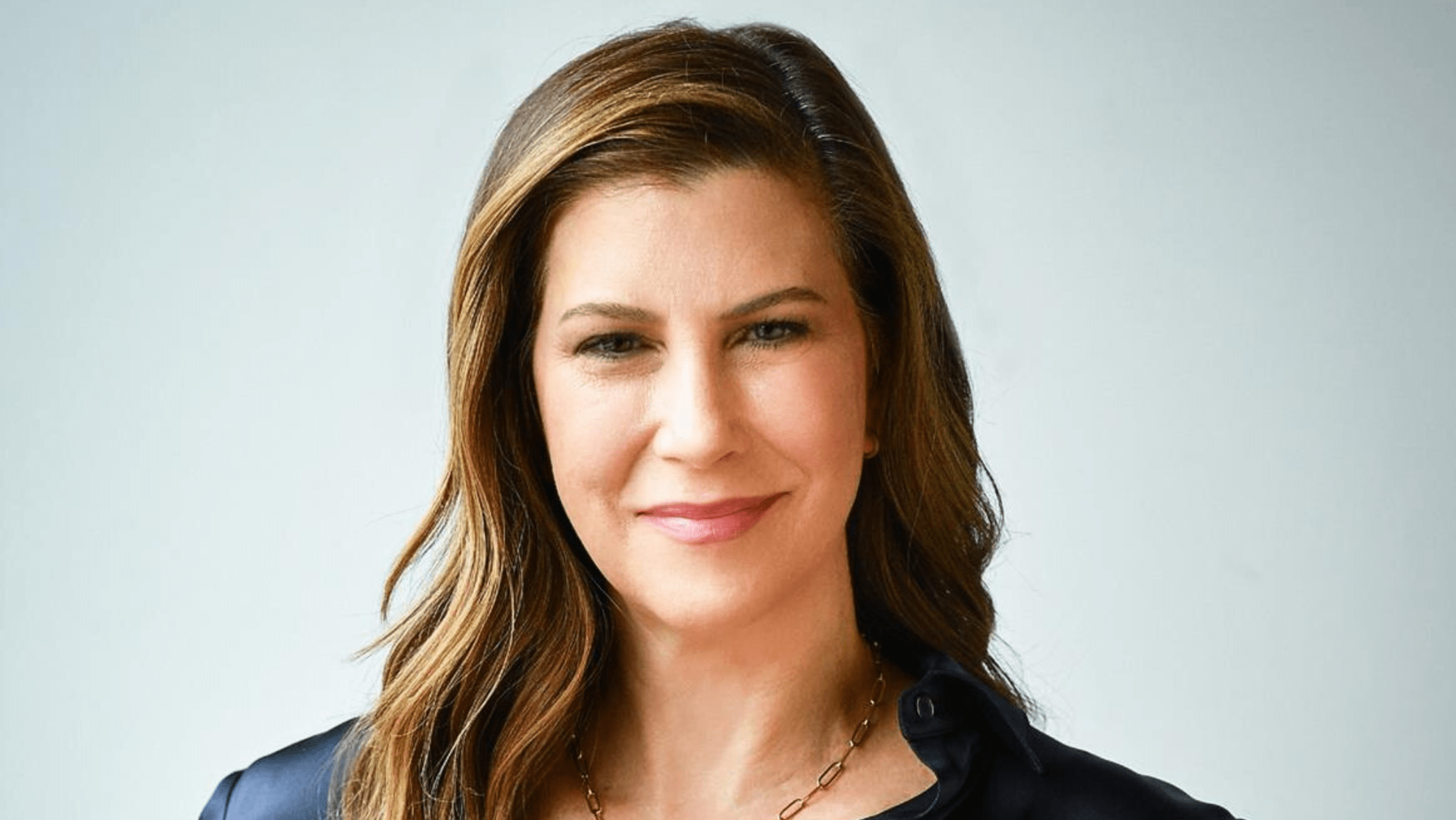[vc_row][vc_column][vc_column_text]Throughout history, research into women’s health has been widely underfunded. Contributing to the women’s health movement from the outside in Huha founder, Alexa Suter, has found a way to impact women’s health in a simple way—underwear.
Underwear is the first item of clothing you slip on, but can it be more than an undergarment? For Suter, underwear is a catalyst for starting conversations and improving the everyday life of women around the world.
Suter was struggling with back-to-back UTIs (urinary tract infections) when she decided to log her daily habits to see if there was a way for her to determine any causes of irritation. Through her tracking, she realized that the fabric of her underwear played a major role in her discomfort levels.
Fast forward a few years, and after many samples and trials, Huha was created. Suter took her learnings about fabrics and landed on the zinc-woven natural fibres that make up Huha products. Through using these fabrics, the underwear is not only breathable, but can help to protect your most precious parts from bacteria that can lead to odor, infection or itch.
“We’re not doctors, we’re not scientists,” said Suter. “For what a customer can expect, I think the biggest thing that’s most immediate is just the comfort that you’ll feel. And that comes down to the breathability and the zinc.”[/vc_column_text][vc_row_inner][vc_column_inner width=”1/2″][vc_single_image image=”19294″ img_size=”full”][/vc_column_inner][vc_column_inner width=”1/2″][vc_single_image image=”19289″ img_size=”full”][/vc_column_inner][/vc_row_inner][vc_column_text]More than a comfortable product, Suter has positioned Huha as a brand that sparks conversations. In addition to their highly inclusive marketing images, the brand uses fruit as an analogy to sizes, a topic that Suter realized was uncomfortable for many women to talk about.
“When we talked to women and asked what size do you wear? it didn’t make them feel good about themselves to say, ‘I’m a medium,’ ‘I’m an extra large,’ ‘I’m an extra small,’ whatever it was,” she said.
Offering a new way to discuss body shapes and sizes was just one of the ways that Suter hopes Huha will help increase women’s overall confidence. For Suter, instilling positive body image ideals in young girls to help them grow up and become fearless young women is an overarching goal throughout all she does.
When there was a problem with her health, Suter found a solution. And now, Huha is helping women everywhere combat the issues that sparked its creation. For this week’s Women Who Lead spotlight, Bay Street Bull spoke with Huha founder, Alexa Suter, about creating a dialogue around women’s health and making a path for future generations. [/vc_column_text][vc_separator][vc_single_image image=”19285″ img_size=”full”][vc_column_text]
What was your call to action in creating Huha underwear?
I’ve always been an entrepreneurial type, so it’s been really natural for me to go into the world and to see things that aren’t working or see problems and want to find the solution. A few years ago I went through, what was about six months of back-to-back UTI’s. I kept getting this medication and it kept going away, but then it would come back. During that time I was travelling a lot as well, I was constantly on the go. When you’re traveling, it’s really hard to get any kind of medical attention. So, I took it upon myself to try and figure out what was going on. I created a journal and I started monitoring everything. What did I eat today? How much water did I drink? What was I wearing? What kind of soap am I using? I was really trying to find a solution because I was just in so much pain.
Eventually, I came down to the fact that my underwear was a big contributor to my comfort. I didn’t know whether it was actually linked to the issue, but I knew that it was affecting my comfort. I figured out that if I was wearing synthetic fabrics, like nylon or polyester, it was much worse and it would flare up. If I was wearing something more natural, like cotton, it seemed to be much better. That was my first a-ha moment with underwear.
It wasn’t until maybe two or three years later that I started looking at the industry more seriously, because I really wanted to start a product based business. I was looking at a bunch of different things and I really honed in on women’s underwear as an industry because I felt from my own personal experience, it really needed to be disrupted. Once I actually dove in and started doing the research, I realized just how bad it was. From there I couldn’t stop and Huha was founded.
As you said, it’s difficult to go to the doctor and find a specific solution or even a specific cause because so much surrounding women’s health, especially within the realm of women’s reproductive health, is so taboo and underfunded. How do you hope Huha changes the market as an underwear that promotes vaginal health and makes it normal to do so?
Yeah, that’s so true. And I think a big part of what our brand is about is having these conversations and talking about it. It’s been mind blowing to have all these women and customers coming forward and saying, ‘I’ve had skin sensitivities, I get a rash every time I wear certain underwear and now Huha has changed that for me. I’m so much more comfortable.’
It’s not an easy thing to do as a brand to really go in and disrupt—especially when you’re new, like we are. I think for us, as long as we keep leading with the intention of making women’s lives easier and more comfortable so that they can do everything else with more ease and more joy, I think that’s really the key. A lot of it just comes down to the fabrics we choose to work with; the commitment to researching the science behind the fabrics with experts in urology and gynaecology really leads the path to that. There is still such a lack of science and research related to, as you said, women’s reproductive organs and vaginal health.
I imagine it was quite the process to create fibres enhanced with zinc that wasn’t just coated in it but it’s actually woven into the fibres and the threads themselves. So what was it like creating and designing with that?
Luckily the technology of the zinc yarn already existed. We took something that already existed on the market and was being used in a really medical sense for a very specific niche like people with skin sensitivities, eczema and things of that nature and baby’s clothes. We really looked at that and thought, ‘Wow, we’re looking at this from a totally new perspective and we can leverage this technology for women’s health.’’ And it just turns out that it’s perfect for that.


And sustainability is a huge pillar in your company. The fact that the products are made with natural fibres, is an added bonus in the fact that it makes it completely biodegradable. Why has sustainability continued to be a pillar in your production even when it comes to packaging, shipment, et cetera?
When you can do better and where you can do better as a business, you should. When it comes down to sustainability, some things are really hard and there’s always a trade off. So, I understand—as much as I don’t want to support it—the thought process that goes behind companies that just use synthetics and what’s much more available. Using the natural fibres is more difficult, but for us, it’s not only better for the planet, it’s also better for us. And that’s our whole mission; to create products that are better for our health. It just so happens that they go hand in hand with what’s more sustainable as well.
As we briefly mentioned before, a lot of women are suffering with an imbalanced pH, UTIs and so on. What can customers expect from using Huha to help deter these issues? And for you as a brand, what was it like implementing a testing process so that you knew that these fabrics would have definitive results for customers?
We don’t like to look at our product as prescriptive. We’re not doctors, we’re not scientists. For what a customer can expect, I think the biggest thing that’s most immediate is just the change in comfort that you’ll feel- and that comes down to the breathability and the zinc. Something that’s really noticeable is the elimination because the zinc will deter that odor causing bacteria as well.
If you’re suffering from UTIs or yeast infections, it’s really hard to put on a pair of underwear and say the underwear cured my yeast infection. And we can’t say that, but we do know that when we look at our fabrics and how they interact with e-coli for example, which is one of the leading causes of a leading bacteria strain that causes UTI infections, we know that it’s over 99 percent effective. Eventually we’ll get to a place where we’re big enough to kind of lead our own research and lead our own studies. For the time being, we’re really testing on ourselves and testing in a lab and then putting those two things together to create a product that works for women.
[/vc_column_text][vc_row_inner][vc_column_inner width=”1/2″][vc_single_image image=”19296″ img_size=”full”][/vc_column_inner][vc_column_inner width=”1/2″][vc_single_image image=”19297″ img_size=”full”][/vc_column_inner][/vc_row_inner][vc_column_text]
And one thing that stood out to us, specifically for Huha, is the marketing techniques that you guys use. Huha is very inclusive and it has a very organic feel to it. The use of fruits and natural unretouched imagery is not something we are seeing in the market. Why was that important to you and why did you guys decide to go ahead with that style?
I grew up with two sisters and a mom primarily, my parents split up and I was young, so I was in a household full of girls. I’ve always been surrounded by women and friends and observed the way women talk about themselves and about their bodies. It’s often self degrading, and I really didn’t like that. I want women to feel 100% comfortable in their skin. To look at things like cellulite and stretch marks and body hair, and just realize that these aren’t bad things, these are completely normal and they’re beautiful. So, in our marketing and our imagery, we really don’t photoshop that out.
Those considerations also went into our size chart. We realized from early on that asking women, ‘What size do you wear?’ didn’t make them feel good about themselves. So we decided to use fruit because fruit is representative of the female anatomy quite a bit in our marketing. I have a marketing background, so it was really just testing, testing, testing, and going with what felt right for the brand and the overall message.
What was your biggest career failure? And what did it teach you?
I’ve come to see failure as a choice. The thing with failure is sometimes we think, ‘Oh, I failed,’ but there’s always a way to pivot. There’s always a lesson to take. As long as you continue going and you continue moving forward, it’s not a failure. It’s a failure when you say, ‘Okay, I’m defeated. I give up.’ So in that sense, I see it as a choice.
For me, when developing the first couple of styles I’d get a sample back from a factory, pull it out of the package and I’d be so excited and then I pull it up and think, ‘Oh no, this isn’t it.’ Every time something like that would happen, it would feel very defeating. I realized that the important thing was to remain very unwavering and that what I wanted wasn’t easy. It took a year and a half to develop two underwear styles. I mean, that just speaks for itself as to all of the many failures that were involved in that process.
And what do you think needs to change in order to normalize or kind of de-stigmatize the support around women’s health and women’s reproductive organs?
There’s a lot of links to certain things being used very widely that are linked to women’s reproductive issues, fertility, and so on. I think it first and foremost comes down to the information that is out there, but it can be difficult for a consumer to find that information and to figure out what it means. So, I think a lot of it really falls on the brands, like Huha, that are creating these products for women to help consumers kind of ingest all that information and to make the responsible choice.
[/vc_column_text][vc_single_image image=”19300″ img_size=”full”][vc_column_text]
What impact do you hope to have on other women who lead, whether it’s a young girl who’s looking up to you or someone that wants to start their own lane? What do you want your impact on that next generation to be?
I really just want women to go for it more. I have a four year old niece who just came to mind as you said that. I want her to grow up and to know that she can just go for it. Go for whatever it is that she wants, and she doesn’t have to play by any roles, or be the one picking up after her partner. It sometimes comes down to those little things in life.
I came across an 18-year-old recently who had started a skincare line and I just thought that was so cool, for these young women to be able to figure things out. They have all of the information at their fingertips and it’s really just a matter of having the confidence. My day to day life, talking with customers and women in the industry, it really does come down to tapping into that. So, I hope that my impact could be to inspire that confidence and act as a mentor to the women I come in contact with.
You just want them to be able to just grow competence in a way that no matter what the world throws at them, they’re able to say, ‘Let’s get it done. I can do this.’
A hundred percent. You see it in them so young and you’re just like, please don’t let the world take that from you. That’s just such gold, you know?[/vc_column_text][/vc_column][/vc_row]













